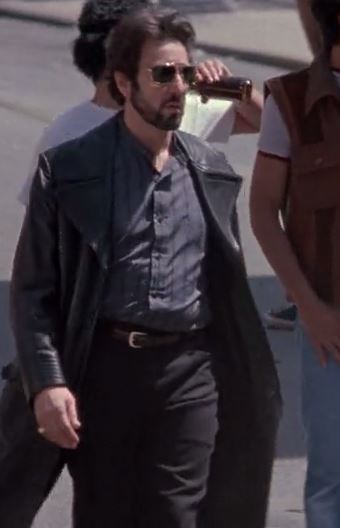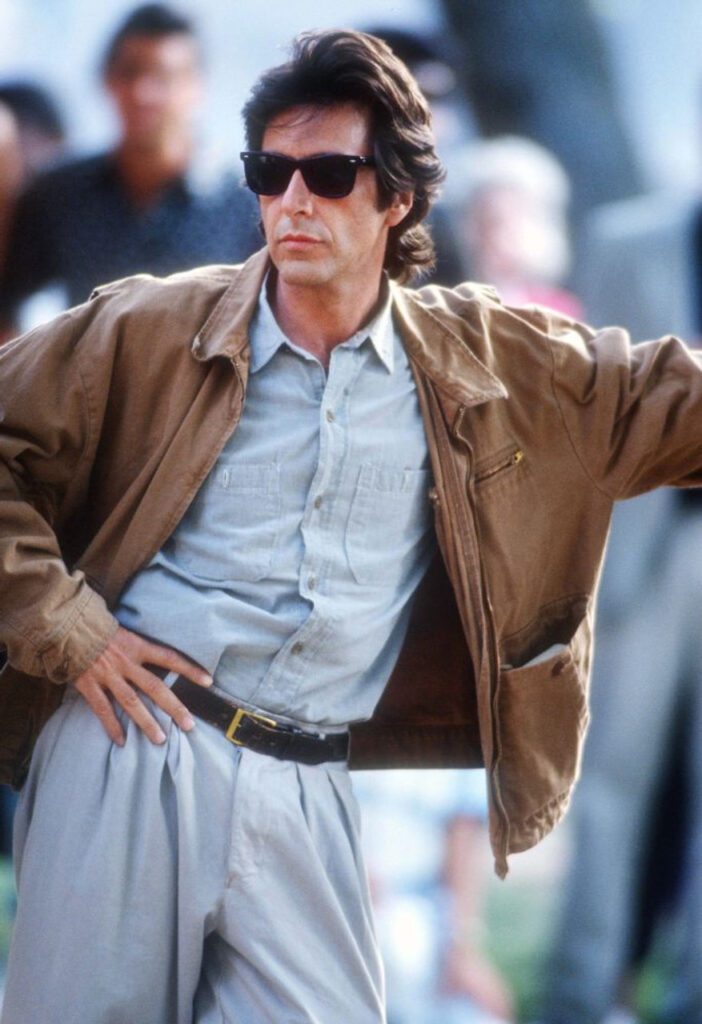“Carlito’s Way” (1993): A Tale of Redemption and Despair in the Underworld – Film Review

“Carlito’s Way,” directed by Brian DePalma and starring Al Pacino in the titular role, stands as a significant cinematic endeavor, not only for its narrative and stylistic achievements but also for the reunion of Pacino and DePalma, a decade after their iconic collaboration on “Scarface” (1983). This 1993 film delves into the life of Carlito Brigante, a former Puerto Rican drug lord who seeks redemption and a new path away from the crime-laden streets of 1970s New York. Unlike their previous work, “Carlito’s Way” offers a more introspective look at the challenges of escaping one’s past, wrapped in DePalma’s signature visual style and driven by Pacino’s compelling performance.
The Journey of Carlito Brigante
At the heart of “Carlito’s Way” is the struggle between destiny and desire, as Carlito seeks to redefine his life in the face of the inevitability drawn by his criminal history. Pacino delivers a nuanced portrayal of Brigante, a character who is both hardened by his experiences and hopeful for a future that remains tantalizingly out of reach. His performance is a delicate balance of intensity and vulnerability, offering a window into the soul of a man caught between two worlds.
DePalma and Pacino: A Cinematic Reunion
The collaboration between Brian DePalma and Al Pacino in “Carlito’s Way” rekindles the dynamic synergy that marked their previous work on “Scarface.” However, while “Scarface” reveled in the excesses of its protagonist’s rise and fall in the drug world, “Carlito’s Way” adopts a more reflective tone, focusing on the quieter moments of Brigante’s journey as much as its explosive confrontations. DePalma’s direction is both stylish and substantive, employing his trademark use of long takes, split diopter shots, and elaborate tracking sequences to enhance the film’s emotional and narrative depth.
Behind the Scenes: Crafting the World of Carlito Brigante
The production of “Carlito’s Way” required meticulous attention to detail to recreate the look and feel of 1970s New York. Production designer Richard Sylbert and costume designer Aude Bronson-Howard played crucial roles in achieving the film’s authentic period aesthetic, from the neon-lit nightclubs to the characters’ attire. The film’s cinematography, by Stephen H. Burum, complements DePalma’s visual storytelling with its vivid portrayal of the city’s gritty underworld, using lighting and color to reflect Carlito’s internal journey.
The screenplay, adapted by David Koepp from Edwin Torres’ novels “Carlito’s Way” and “After Hours,” weaves a complex tale of ambition, love, and loyalty, grounding the film’s more stylized elements in the gritty realities of life in the criminal underworld. The dialogue crackles with intensity, capturing the vernacular of the streets and the poignant reflections of its protagonist.
Themes and Reflections
“Carlito’s Way” explores themes of redemption, fate, and the indelible nature of one’s past. Carlito’s struggle to escape his former life and his efforts to stay true to his new moral compass amidst a world that refuses to let him go offer a compelling meditation on the possibility of change. The film also examines the dynamics of power, friendship, and love in the face of adversity, making Carlito’s journey both personal and universal.
The relationship between Carlito and his lawyer, David Kleinfeld (Sean Penn), serves as a critical narrative pivot, illustrating the corrupting influence of power and the betrayal of ideals. Penn’s transformation into the sleazy, morally bankrupt Kleinfeld is a standout, providing a stark counterpoint to Carlito’s quest for redemption.
Since its release, “Carlito’s Way” has grown in stature, recognized not only for its thrilling narrative and technical prowess but also for its deeper philosophical inquiries. The film’s critical and commercial success further cemented the reputations of DePalma and Pacino as giants in their respective fields, while its stylistic influence can be seen in numerous films that followed.
“Carlito’s Way” remains a poignant and captivating exploration of the human condition, a testament to the power of cinema to delve into the complexities of redemption, identity, and the inexorable pull of destiny. Through the lens of Carlito Brigante’s life, the film invites viewers to ponder the choices that define us and the paths we take in search of a better self.




